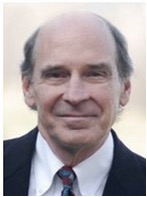The Medicare Payment Advisory Commission (MedPAC) has done it again. At their October 4, 2017 meeting they agreed to repeal the Merit-based Incentive Payment System (MIPS), an insanely complex and evidence-free pay-for-performance scheme within the larger program known as MACRA. Instead of examining how they made such a serious mistake in the first place (MedPAC has long supported turning fee-for-service Medicare into a giant pay-for-performance scheme), they repeated their original mistake –- they adopted yet another vague, complex, evidence-free proposal to replace MIPS.
MedPAC’s history gives us every reason to believe that when they discuss their “repeal and replace MIPS” proposal at their December 2017 and January 2018 meetings, they will refuse to discuss their “replace” proposal in any detail; they will not ask for evidence indicating their proposal is safe and effective; and in their March 2018 report to Congress they will foist upon CMS the dirty work of figuring out how to make their lead balloon fly. CMS will dutifully write up a gazillion pages of gibberish describing how the new program is supposed to work, it won’t work, MedPAC will return to the scene of the crime years later and, pretending they had no part in creating it, propose yet another evidence-free tweak. And so on.
MedPAC is caught in a trap of their own making. They endorse health policy fads without any evidence and without thinking through the details; then when the fads don’t work, rather than review their defective thought process, they endorse other iterations of the fads, again without evidence and without thinking through the details. The tweaked version of the fad fails, and MedPAC starts the cycle all over again. Two analogies for this trap or vicious cycle occur to me. One is the tar pit where mastodons got stuck and died; struggle only caused the dimwitted creatures to sink faster. The other is the hedge fund that gradually becomes a Ponzi scheme. Investors like Bernie Madoff make bad investments, and when the investments go south, instead of admitting their mistakes, they induce their investors to throw good money after bad.
In this comment I will explain why MedPAC’s MIPS-repeal-and-replace scheme deserves ridicule. In my next comment I will describe the process by which MedPAC built the MACRA tar pit or, if you like, the intellectual Ponzi scheme, that now traps them.

 Could OpenNotes help push predictive analytics from paternalism to partnership?
Could OpenNotes help push predictive analytics from paternalism to partnership? The idea that payment should be linked to the value lies at the heart of most of the transactions we participate in on a daily basis. Yet, value based payment in healthcare has seemingly run into very rocky waters as of late. It is at this precarious time that stakeholders representing large employers and other purchasers of health care’ took to the Harvard Business Review to
The idea that payment should be linked to the value lies at the heart of most of the transactions we participate in on a daily basis. Yet, value based payment in healthcare has seemingly run into very rocky waters as of late. It is at this precarious time that stakeholders representing large employers and other purchasers of health care’ took to the Harvard Business Review to If you had illusions, or hopes, that the “Kill Obamacare” reality show starring Donald Trump would settle down to a dull roar, events of the last few days should blow those illusions out of the water.
If you had illusions, or hopes, that the “Kill Obamacare” reality show starring Donald Trump would settle down to a dull roar, events of the last few days should blow those illusions out of the water. Some things never change. Joe Flower is one of those things. Pay attention. Joe was the keynote speaker at Health 2.0 Silicon Valley earlier this month. We’re excited to feature the text of his remarks as a post on the blog today. If you have questions for Joe, you can leave them the comment section. You’ll find a link to a complimentary copy of his report Healthcare 2027: at the end of this post. You should
Some things never change. Joe Flower is one of those things. Pay attention. Joe was the keynote speaker at Health 2.0 Silicon Valley earlier this month. We’re excited to feature the text of his remarks as a post on the blog today. If you have questions for Joe, you can leave them the comment section. You’ll find a link to a complimentary copy of his report Healthcare 2027: at the end of this post. You should  The Center for Medicare and Medicaid Innovation released a Request for Information (RFI) last week– “
The Center for Medicare and Medicaid Innovation released a Request for Information (RFI) last week– “ There’s a debate in the United States about whether the current measures of health care quality are adequate to support the movement away from fee-for-service toward value-based payment. Some providers advocate slowing or even halting payment reform efforts because they don’t believe that quality can be adequately measured to determine fair payment. Employers and other purchasers, however, strongly support the currently available quality measures used in payment reform efforts to reward higher-performing providers. So far, the Trump administration has not weighed in.
There’s a debate in the United States about whether the current measures of health care quality are adequate to support the movement away from fee-for-service toward value-based payment. Some providers advocate slowing or even halting payment reform efforts because they don’t believe that quality can be adequately measured to determine fair payment. Employers and other purchasers, however, strongly support the currently available quality measures used in payment reform efforts to reward higher-performing providers. So far, the Trump administration has not weighed in.







